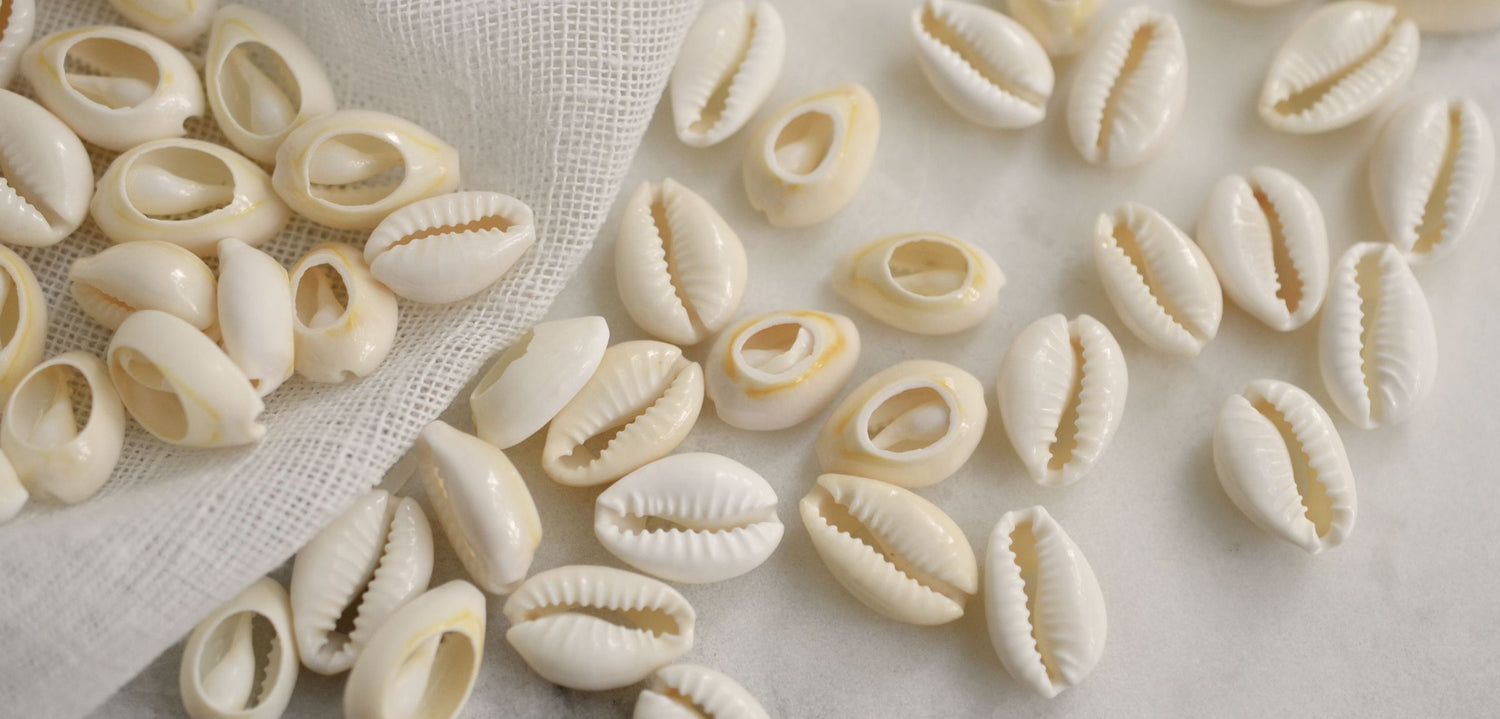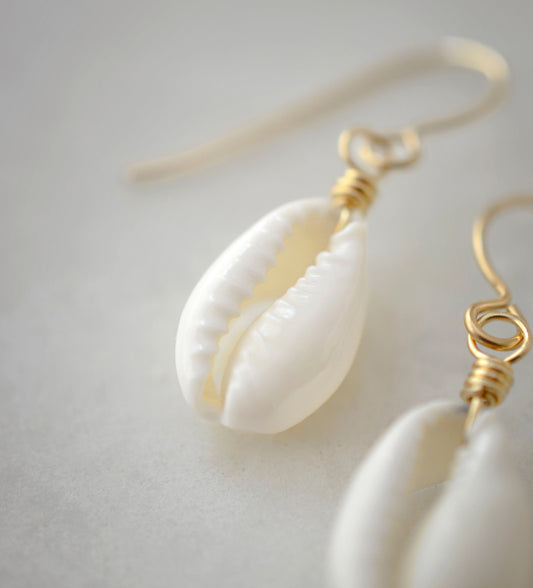COWRIE SHELLS: HISTORY & MEANING
Cowrie shells: deceptively small and modest, but their story and symbolism have stretched across time and civilizations. These shells, once currency and sacred objects, are now part of our modern world, appearing in fashion, jewelry, and spiritual practices. From symbols of wealth and authority to their present role, cowrie shells continue to enchant with their charm and meaning. In this journal entry, we'll delve into the history and meaning of cowrie shells!

What Are Cowries?
Cowries are snails (or marine gastropod mollusks) that live in rocky seabeds in warm shallow waters. Around the world, there are roughly 200 species of Cowry found in various locations including the South Pacific, Indo-Pacific, Central and Baja California, and Hawaii. They vary in size, and can usually be spotted at night when they emerge to dine on a variety of plant and animal matter. Typically living in one small area their whole life, smaller cowries have a lifespan of two to three years, while larger ones can live up to a decade. And here’s why we love them—they mate for life!
Well-known Types of Cowry
Money Cowry : A smaller species that was used as currency and is often used in jewelry making today.
Tiger Cowry: A larger snail, which has spotted tiger-like colors.
Egg Cowry: A completely white shell with a red-purple interior.
-
Trina Necklace: Cowrie Shell
Regular price From $ 38.00 USDRegular priceUnit price per -
Cowrie Shell Earrings
Regular price $ 29.00 USDRegular priceUnit price per -
White Cowrie Shell Necklace
Regular price From $ 32.00 USDRegular priceUnit price per
Cowrie Symbolism
Cowrie shells have a rich history that dates back centuries, with their origins rooted in the waters of the Indian Ocean. These small, glossy shells were once prized for their beauty and scarcity, making them a valuable commodity in trade among ancient civilizations. As they made their way across continents and cultures, cowrie shells became imbued with spiritual significance, connecting people to the natural world and their belief in divine forces.

Cowries in Africa
Cowrie shells were highly revered in many African cultures for their spiritual significance. It was believed that these shells, which symbolized the ocean’s purity and abundance, could bring good luck and protection, and were used in spiritual practices that honored the gods and ancestors. Additionally, they were often worn by women to promote fertility and to protect them during childbirth, making them a symbol of femininity.
Cowrie shells were, and are still, also used for divination. One traditional Yoruba method (called merindinlogun) was to have a diviner ask the spirit of the ancestors a question, then cast 16 cowrie shells onto a carved wooden tray. The shells would respond by landing with either a positive outcome (opening up) or a negative outcome (opening down).
Cowries In Asia
Cowries were first used as currency in Ancient China around 2,000 BC, replacing the traditional bartering system that relied on crops and cattle. Lightweight and easy to carry, the shells were strung in groups of five as a base value. This practice continued for approximately 1,000 years until it was replaced by bronze shells due to challenges in sourcing real cowries.
Yet, across many Asian cultures, cowries also held deep symbolic meaning. They were often associated with prosperity, good luck, and protection. In countries like India and China, cowrie shells have been used for centuries in various rituals, ceremonies, and as decorative ornaments. The intricate design of the shells is admired for its beauty and believed to bring positive energy into the lives of those who possess them.
In Feng Shui, cowrie shells are considered to be powerful symbols of prosperity and wealth, attracting positive energy and abundance into homes and businesses. It is said that keeping a basket of cowrie shells near an entrance door can attract good luck and promote a successful career.
Cowrie Shells Today
In today's world, cowrie shells continue to hold special meaning and significance for many individuals and cultures. While some may still view them as symbols of fertility, protection, and good fortune, others have found new interpretations that range from fashion statements to spiritual tools. They are used in jewelry, home decor, or even in energy work. The versatile nature of cowrie shells allows for a wide range of uses, making them a timeless symbol that transcends cultural and geographical boundaries.
Cowrie Meaning:
Fertility: Resembling the female genitalia, the cowrie shell has been worn by women worldwide as a symbol of fertility, with the belief that it can aid in conception and safe childbirth.
Prosperity & Luck: In some cultures, the cowrie shell is believed to symbolize wealth and abundance, as it is often considered a sacred gift from the Ocean Goddess, Mote. It is said to bring good luck and blessings to its possessor.
Protection: The shells are believed to protect the wearer’s spirit, as they are said to ward off evil spirits and negative energy.
Cowrie Shell Earrings
White Cowrie Shell Necklace
Collections
-

Best Sellers
Discover our exquisite collection of handcrafted necklaces, earrings, and bracelets. Each piece...
-

Gemstone Necklaces
Discover our collection of natural, genuine crystal and gemstone pendants, chokers, and necklaces. Each...
-

New Arrivals
Discover stunning new jewelry pieces from our latest collection of necklaces, earrings,...











